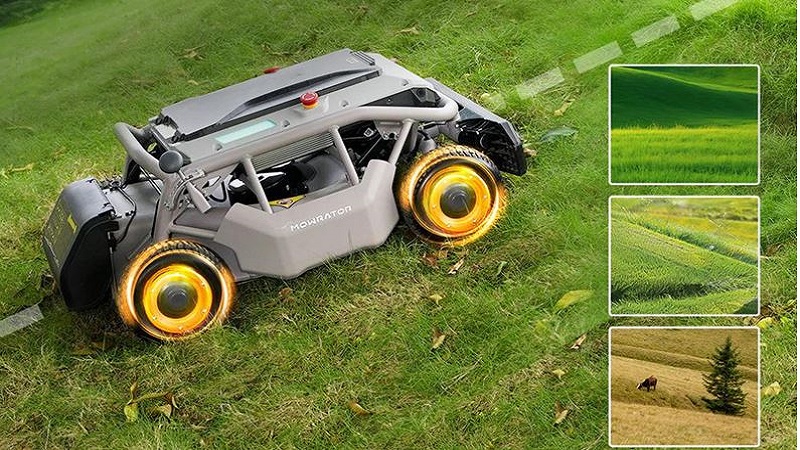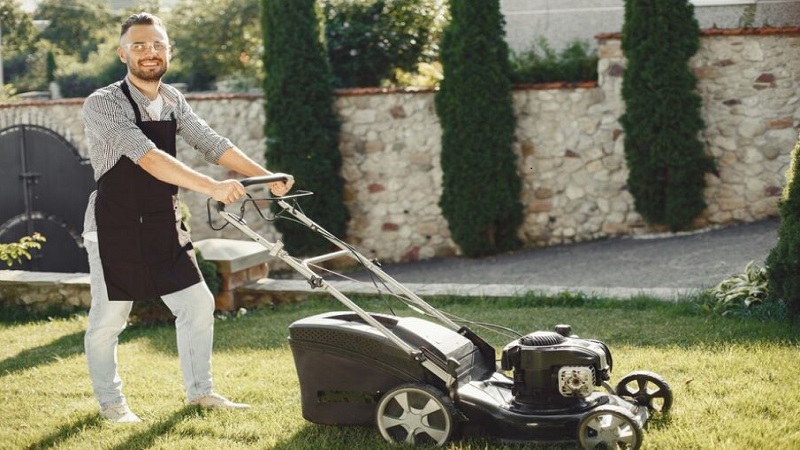Mowing a hill can be a daunting task for many homeowners. The right technique not only ensures a neat lawn but also prioritizes safety and efficiency. This article explores the best methods for tackling hilly terrain, offering tips and tools that make the job easier while keeping your landscape looking its best.

Understanding the Challenges of Mowing a Hill
Mowing a hill presents unique challenges that affect both safety and efficiency. Uneven terrain, slopes, and potential obstacles make careful planning essential.
Safety Considerations
Safety is paramount when mowing hills. Slips and falls often occur due to steep gradients, especially on wet grass. Wearing appropriate footwear with good traction minimizes the risk of accidents. Additionally, mowing in dry conditions helps reduce slippage. It’s critical to remain aware of surroundings, including potential hazards like rocks or uneven ground. Friends or family can assist by providing a spotter when tackling particularly steep areas.
Equipment Selection
Choosing the right equipment for hilly terrain impacts both performance and safety. Riding mowers may work well on gentle slopes, while self-propelled push mowers are suitable for slightly rugged areas. A remote control slope mower is an excellent choice for handling steep inclines with ease and precision. Handheld tools, such as string trimmers, effectively handle tight spaces and edges. It’s important to select tools designed for hilly landscapes, as these often feature enhanced stability and control. Consulting user manuals and reviews can guide users to the best options for specific terrain types.
Best Mowing Techniques
Employing effective mowing techniques can improve both safety and efficiency when tackling hilly terrain. Two essential aspects of this process are mowing patterns and mowing direction.
Mowing Patterns
Utilizing specific mowing patterns can improve results on slopes. Common patterns include:
- Up and Down: Mowing uphill and downhill maintains control and minimizes strain. This method helps avoid uneven surfaces and keeps the mower’s weight balanced.
- Horizontal Strips: For wider hills, mowing in horizontal strips can reduce soil erosion. This pattern creates a more even cut and can manage grass clippings effectively.
- Diagonal Cuts: Employing diagonal cuts on steep slopes can provide better traction. This technique ensures a more secure grip on the ground during mowing.
Adapting patterns based on the hill’s slope and surface aids in maintaining a neat lawn while promoting safety.
Mowing Direction
Selecting the right mowing direction significantly impacts both safety and effectiveness. Important considerations include:
- Uphill and Downhill: Start mowing downhill to prevent loss of control. Transitioning to uphill cuts afterward provides better balance and stability.
- Cross-Mowing: For narrow areas, cross-mowing can improve visibility and control. This approach helps navigate steep edges without risking slips.
- Weather Conditions: Mowing in dry conditions improves traction. Wet grass can lead to slipping, increasing the likelihood of accidents.
Careful selection of mowing direction relative to the slope’s angle enhances the mowing experience, ensuring safety and efficiency.
Choosing the Right Equipment
Selecting appropriate equipment plays a crucial role in successfully mowing hills. Proper tools improve both safety and efficiency, making the task easier.
Lawn Mower Types
When mowing hills, specific lawn mower types are more effective.
- Push Mowers: Suitable for small yards and gentle slopes, allowing better control and maneuverability.
- Self-Propelled Mowers: Ideal for medium slopes, requiring less effort to push up hills.
- Riding Mowers: Recommended for larger, steeper terrains. Zero-turn mowers provide flexibility and ease of navigation around obstacles.
- String Trimmers: Useful for trimming edges and hard-to-reach areas, especially on uneven ground.
Selecting the right mower depends on slope severity, yard size, and personal preference.
Additional Tools and Accessories
In addition to a suitable lawn mower, some tools improve safety and mowing efficiency.
- Safety Gear: Wearing non-slip footwear and gloves improves traction and grip, minimizing the risk of slips or falls.
- Lawn Edgers: Help create a neat finish along driveways and flower beds, improving overall lawn aesthetics.
- Grass Catchers: Attach to mowers, making cleanup easier by collecting clippings as you mow.
- Hedge Trimmers: Effective for maintaining shrubs on hilly landscapes, ensuring all areas are well-groomed.
Investing in the right equipment and tools streamlines the mowing process and provides a safer experience in hilly terrain.
Maintenance Tips for Mowing Hills
Mowing hills requires specific maintenance to ensure safety and lawn health. Proper care of the mower and attention to the lawn’s status post-mowing influences outcomes significantly.
Blade Care
Regularly maintaining the mower blades ensures clean cuts and healthy grass. Dull blades tear grass instead of cutting it, leading to a rugged appearance and increased susceptibility to disease. Sharpen blades every 20-25 hours of use or at least once per season. Cleaning the blades after each use prevents grass buildup, which can affect performance. Inspect for damage, such as dents or bends, and repair or replace blades as needed to maintain optimal functioning.
Lawn Health Post-Mowing
Post-mowing care plays a crucial role in preserving lawn health. Allow grass clippings to remain on the lawn as they decompose, returning nutrients to the soil. Water the lawn deeply but infrequently after mowing. This encourages deeper root growth, improving drought resistance. Monitor for any signs of stress or disease, especially after mowing on a slope, and adjust care routines accordingly. Regularly aerate the lawn to prevent soil compaction, particularly in hilly areas where foot traffic may be heavier.
Conclusion
Mowing hills requires a thoughtful approach to ensure both safety and lawn health. By selecting the right techniques and equipment homeowners can tackle the challenges of uneven terrain effectively. Adapting mowing patterns to match the slope and surface conditions is crucial for achieving a well-manicured lawn.
Incorporating maintenance practices like regular blade care and proper post-mowing techniques will not only improve the lawn’s appearance but also promote its overall health. With these strategies in mind homeowners can confidently manage their hilly landscapes and enjoy a beautiful outdoor space.
